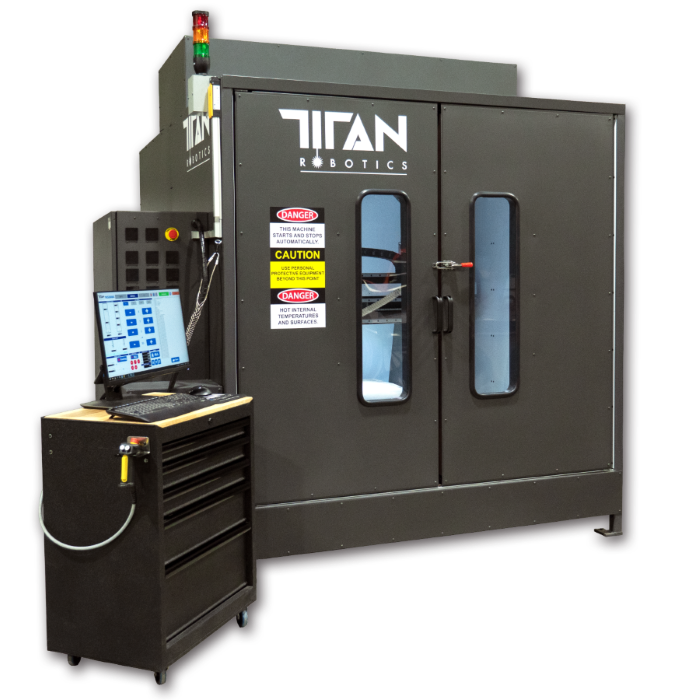3D Systems (NYSE: DDD) is expanding its role in the Middle East and North Africa (MENA) region. The 3D printing stalwart has signed an agreement with the Saudi Arabian Industrial Investments Company (Dussur) to increase the use of additive manufacturing in the Kingdom of Saudi Arabia and the larger MENA area. The deal will be key to growing the country’s domestic AM production capabilities as a part of its Vision 2030 program.
At a ceremony in Riyadh on March 29, 2022, it was announced that the Kingdom has opened a Center for Innovation and Additive Manufacturing. The site will begin with a focus on energy before expanding into industrial and healthcare applications. Opening in late 2022, it will host a range of plastic and metal 3D printing technologies in addition to 3D Systems application engineers.
“Establishing in Saudi Arabia the first Center for Innovation and Additive Manufacturing with a world-class player such as 3D Systems will unlock further localization initiatives across the supply chain,” said Dr. Raed Al-Rayes, CEO, Dussur. “This partnership is linked to Dussur’s mission to support the Kingdom’s industrialization journey and localize disruptive technologies that will revolutionize the way we think of manufacturing. We are looking forward to commencing our work with 3D Systems to contribute to the security of supply in the region and build local capabilities for the jobs of the future.”
3D Systems was chosen for its broad range of 3D printing technology and its application expertise. The new center will apply the company’s proven models in application development and production from its Littleton, Colorado, and Leuven, Belgium locations.
“Our partnership with Dussur will accelerate the adoption of additive manufacturing in the region, enabling diversification of the Saudi Arabian economy. While the energy segment will be one area of focus, a broad range of applications across industrial, aerospace, and healthcare segments will be addressed. We are excited about the partnership and believe it will provide a strong foundation within the Kingdom to expand local engineering and manufacturing and encourage green energy sources,” said Dr. Jeffery Graves, president and CEO of 3D Systems.
The deal was just one of five total announced by Dussur, which is owned by the government’s Public Investment Fund, Saudi Aramco, and SABIC. The other agreements were made up of the following:
- A partnership with Korea’s SeAH Changwon Integrated Specialty Steel Co. Ltd to create the Kingdom’s first seamless stainless steel pipe production plant.
- A joint venture agreement to build the nation’s first bus manufacturing facility with Tatweer Educational Transportation Services Company and CHTC KINWIN Automobile Co.
- A joint venture with Baker Hughes to establish a blending and chemical reaction facility for the oil industry.
- And the acquisition of the Clean Technologies business of DuPont de Nemours, Inc., which specializes in chemical catalysts and equipment for the technologies in the metals, fertilizer, chemicals and oil refining sectors.
AM has been growing in the Middle East, with the United Arab Emirates investing in the technology, particularly in additive construction. Saudi Arabia’s state-owned chemical company, SABIC, is the second largest company in the Middle East and has traditionally played a crucial role in AM. As a manufacturer of ULTEM materials, SABIC has been the primary supplier of aerospace-approved polymers for the 3D printing industry.
This was first performed through the leading maker of material extrusion 3D printers, Stratasys, but expanded once a number of printer manufacturers emerged that also offered high-temperature materials. This has recently come to include 3D Systems itself, which has begun investing in material extrusion through a partnership with Jabil and the acquisition of two printer manufacturers, Kumovis and Titan Robotics.
Because ULTEM and related materials like PEKK and PEEK are very strong and resistant to chemicals and corrosion, they are ideal in oil and gas applications. According to “The Market for Additive Manufacturing in the Oil and Gas Sector 2018-2029” report from SmarTech Analysis, 3D printing for the oil and gas industry could represent a $2 billion revenue opportunity by 2029. Given Saudi Arabia’s role as the world’s largest oil exporter, focusing on 3D printing for the energy sector makes perfect sense. This is particularly true give the transition of fossil fuel companies are implementing, with the emphasis slowly moving from oil as an energy commodity to a material commodity.
While the deal certainly raises questions about the sustainability framing applied to 3D printing, it also highlights the contradictions in applying a moral justification to engaging in or avoiding certain business deals. For instance, there is one particular military conflict that is drawing the world’s attention and resulted in boycotts from the AM industry. Meanwhile, a country with its own track record of human rights abuses is engaged in another war that could elicit similar economic pressures if it received the same sort of global attention.
Subscribe to Our Email Newsletter
Stay up-to-date on all the latest news from the 3D printing industry and receive information and offers from third party vendors.
You May Also Like
Gorilla Sports GE’s First 3D Printed Titanium Cast
How do you help a gorilla with a broken arm? Sounds like the start of a bad joke a zookeeper might tell, but it’s an actual dilemma recently faced by...
Nylon 3D Printed Parts Made More Functional with Coatings & Colors
Parts 3D printed from polyamide (PA, Nylon) 12 using powder bed fusion (PBF) are a mainstay in the additive manufacturing (AM) industry. While post-finishing processes have improved the porosity of...
$25M to Back Sintavia’s Largest Expansion of Metal 3D Printing Capacity Since 2019
Sintavia, the digital manufacturing company specializing in mission-critical parts for strategic sectors, announced a $25 million investment to increase its production capacity, the largest expansion to its operations since 2019....
Velo3D Initiates Public Offering in a Bid to Strengthen Financial Foundations and Drive Future Growth
Velo3D (NYSE: VLD) has been among a number of publicly traded 3D printing firms that have attempted to weather the current macroeconomic climate. After posting a challenging financial report for 2023,...


































